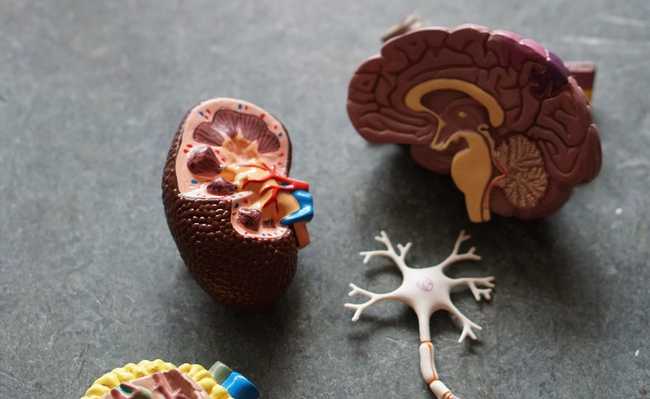Why do scorpions worry?
Number of poisoning cases grew 600% in 15 years; the danger of scorpions worries the population

Image: Wikimedia Commons
Dozens of plastic boxes piled from floor to ceiling in an air-conditioned room in a new wing of the Butantan Institute's vivarium house around 5,000 live specimens of Tityus serrulatus, the yellow scorpion, the species that most poisons people in the country. Technicians and researchers from the arthropod laboratory move between the boxes carefully, but without fear, to feed the animals with cockroaches and crickets, taken daily from a stock of thousands of insects kept in the rooms next door.
Scorpions – both yellow and other species – are kept there for two purposes. The first is the production of the serum used to neutralize the action of the poison – or venom –, which is increasingly important given the almost 600% increase in the number of accidents and deaths caused by these animals in the last 15 years.
This increase is the result of urban expansion over areas formerly occupied by forests, the accumulation of garbage and debris that attract insects that serve as food, and the ability of these animals to adapt to varied environments, from rainforests to deserts. According to Ministry of Health records, scorpions caused most accidents with venomous animals in the country, with 74,598 cases recorded, and caused more deaths (119) than snakes (107) in 2015.
The second purpose is to research the effects – often unexpected – of scorpion venom on the human body. “Knowledge about the components of the venom and its effects still has gaps”, says Dr. Fan Hui Wen, project manager at Butantan, who monitors the production of serum against scorpion stings. "Some species are causing accidents with clinical manifestations different from those that were known until now."
In a study published in September in the journal Toxicon , researchers from the Tropical Medicine Foundation, in Manaus, presented the probable first record of an accident classified as serious, with muscle spasms and neurological alterations, caused by Tityus silvestris , a common species in Brazil. Amazon, generally associated with minor accidents. A 39-year-old man with liver problems caused by hepatitis B – he was waiting for a transplant – was stung in the elbow and shoulder while sleeping in his home on the outskirts of Manaus. Three hours later, he arrived at the Tropical Medicine Foundation hospital reporting only pain and paresthesia (tingling) in the region of the bite, in his left arm.
Within two hours, however, the man had difficulty breathing, tachycardia, hypertension and muscle spasms. The picture got worse. He was admitted to an intensive care unit, received saline and other medications and was released just seven days later. “This case indicates that the clinical picture can get complicated regardless of the species causing the poisoning”, says biochemical pharmacist Wuelton Marcelo Monteiro, a researcher at the foundation and one of those responsible for the study. “There are still few works on the consequences and variation of the effects of this species with wide geographic distribution in the Amazon.”
Among the approximately 160 species of scorpion found in Brazil, only 10 cause poisoning in humans. In general, the venom – made up of proteins, enzymes, lipids, fatty acids and salts – acts on the nervous system, causing intense pain and muscle numbness at the site of the bite. Less frequently, systemic effects such as vomiting, tachycardia, arterial hypertension, intense sweating, agitation and drowsiness are observed. Difficulty breathing characterizes the most serious conditions, seen mainly in children. The bites by Tityus obscurus, common in the Amazon region, can also cause neurological effects, with spasms, tremors and a sensation of electric shock.
“Since scorpion venom can be quickly absorbed into the bloodstream”, says pediatrician Fábio Bucaretchi, a professor at the Faculty of Medical Sciences at the State University of Campinas (FCM-Unicamp), “the clinical manifestations indicative of severe poisoning generally start in the first two hours after the bite”.
In a large study, published in 2014 in Toxicon , Bucaretchi and other researchers examined 1,327 cases of accidents involving scorpions treated at the Hospital de Clinicas da Unicamp from 1994 to 2011. In this survey, accidents with only local reactions predominated (79.6%) and systemic, with vomiting, sweating and changes in heart rhythm (15.1%). The so-called dry bite – with no signs of poisoning – accounted for 3.4% of the total cases analyzed, while the most serious cases, with risk of death, were 1.8%. “All the serious cases and the only lethal case occurred in children under the age of 15 years”, says Bucaretchi.
Most of the accidents caused by identified animals were attributed to the black scorpion, Tityus bahiensis (27.7%), and to the yellow one (19.5%), normally the main cause of accidents and, in this study, responsible for the most serious occurrences. . The yellow scorpion is also restless because of its ability to adapt to the urban environment and the type of reproduction. Females of this species are able to reproduce on their own, without the need for males, through a process known as parthenogenesis; each litter can result in up to 30 puppies.
Read more about it here.
Source: FAPESP Agency










